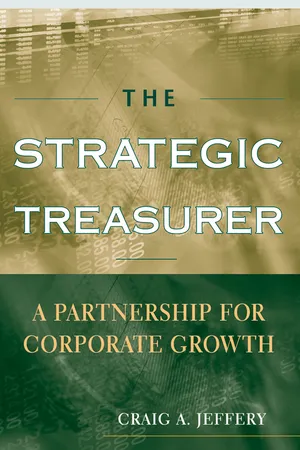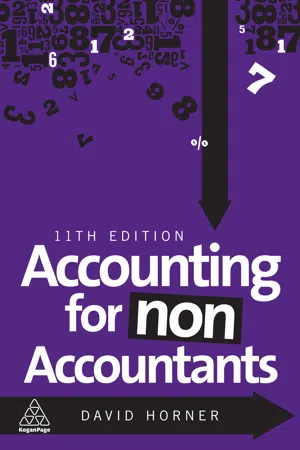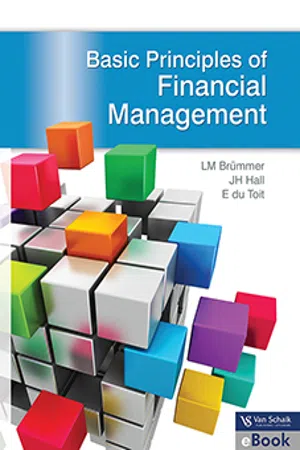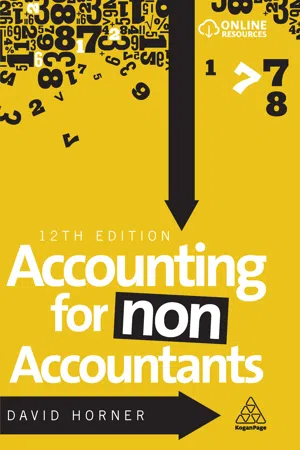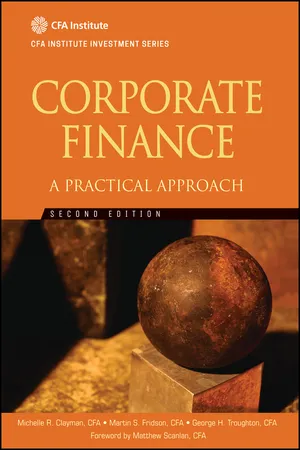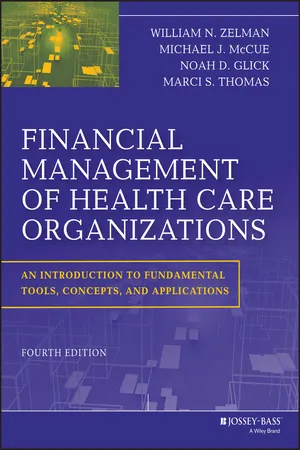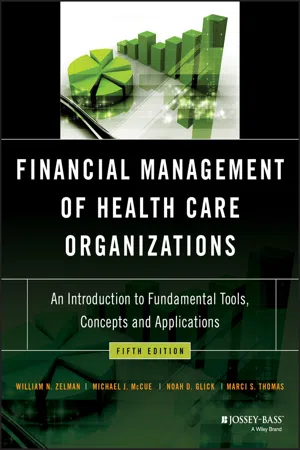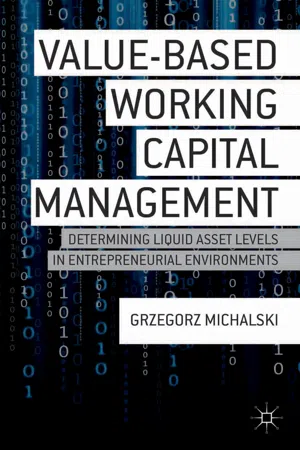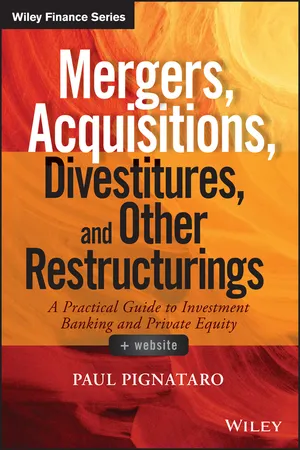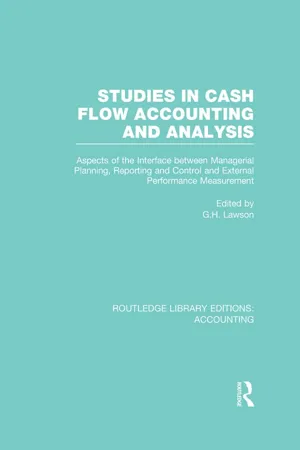Business
Working capital
Working capital refers to the funds a company uses for its day-to-day operations, including covering short-term expenses like payroll, inventory, and bills. It is calculated by subtracting current liabilities from current assets and is essential for maintaining smooth business operations. Having sufficient working capital ensures a company can meet its financial obligations and invest in growth opportunities.
Written by Perlego with AI-assistance
Related key terms
12 Key excerpts on "Working capital"
- eBook - ePub
The Strategic Treasurer
A Partnership for Corporate Growth
- Craig A. Jeffery(Author)
- 2009(Publication Date)
- Wiley(Publisher)
CHAPTER 7Owning Working capitalWorking capital is not just ratios and balances on paper. It exists out in the operations of the company. By going out to the local divisions and watching how the receivables, payables and other areas function, you will truly understand the Working capital of your business, how it works and how it can be optimized.—Arthur P. Lorenz, Treasurer & Director of Financial Planning & Analysis, HunterDouglasThe Treasurer is often the rightful owner of Working capital and must, therefore, manage it appropriately. To accomplish this goal, there are some new methods and techniques that are gaining traction with Treasurers. The value of optimizing most organizations’ Working capital is well recognized. And every well-run organization manages Working capital in a thoughtful and active manner.The following will identify and distinguish two common definitions of Working capital and their differing purposes. The two methods will be explained. Appropriate and different uses will be discussed, and the impact of distinctions between liquidity measures and historical Working capital-related items will be highlighted. Several considerations will be explored along the lines of projecting Working capital usage and, finally, several areas of recommendations will be presented to assist those who are charged with managing Working capital.Two Definitions of Working capitalThe term Working capital refers to a formula. Since there are two primary definitions of Working capital—accounting and treasury—it is instructive to know which one is being referred to in order to understand the context.Working capital: Accounting Definition (Traditional)
The first definition may be referred to as the “accounting definition of Working capital.” This definition is also known by many to be the traditional formula for Working capital. The definition, shown as a formula, is: - eBook - ePub
- David Horner(Author)
- 2017(Publication Date)
- Kogan Page(Publisher)
12 Working capital management Introduction A business has two types of capital: fixed capital in the form of non-current assets, such as premises, machinery and equipment; Working capital to fund the business operations over the short term. Working capital consists of the current assets and the current liabilities of the business and is calculated as follows: Working capital = Current assets (inventory, trade receivables and cash) less Current liabilities (trade payables and bank overdraft) Current liabilities represent the short-term debts of the business which will require payment in the near future. Cash will be the medium by which these short-term debts will normally be repaid and settled, but having assets which are expected to be converted into cash in the near future will also be important. The assets which can be quickly converted into cash without any significant loss in the asset’s value – the current assets – are considered to be the firm’s liquid assets. Liquidity refers to how quickly an asset can be converted into cash without serious loss in value. Therefore, the business will need to ensure that it has sufficient amounts of Working capital (the excess of current assets over current liabilities) in order to pay its debts. The Working capital cycle The firm will not simply hold cash ready to pay suppliers and other expenses. Cash will be tied up in various categories as Working capital, which will be in a state of constant flux and will be constantly moving between different categories in a cyclical matter. This Working capital cycle is shown in Figure 12.1. The Working capital cycle works (at least in theory) as follows: a firm will purchase inventory (either as finished goods or as raw materials) on credit from its suppliers (appearing as creditors in the Working capital). After production has taken place the finished goods will be sold on to customers as either cash or credit sales (now appearing as trade receivables in the Working capital) - eBook - ePub
- Brümmer LM, Hall JH, Du Toit E(Authors)
- 2017(Publication Date)
- Van Schaik Publishers(Publisher)
104 you will be referred in some instances instead to the relevant texts in other chapters for those concepts supporting the subject of this chapter. Otherwise, what might appear as a repetition in this chapter will be those concepts of managing Working capital which cannot reasonably be omitted in order merely to avoid what appears to be repetition.An overview of Working capital management
Definition of Working capital
The definition of Working capital often causes confusion. Working capital (i.e. gross or total Working capital) is the amount of funds invested in current assets. There are people who mistakenly believe that it is the sum of all the current liabilities. Furthermore, Working capital will generally consist of both long- and short-term funds; in rare instances, it could consist only of the latter. Net Working capital is the difference between current assets and current liabilities.In the case of LJE Ltd, net Working capital amounts to:R1 500 000 – R500 000 = R1 000 000At the very least, this difference must not be less than zero. More generally, as will be explained in this section, net Working capital should be a positive amount. Should it ever become a negative amount, this would be an indication that the organisation is facing severe liquidity problems and is in danger of being liquidated.The task of Working capital management
Working capital management refers to the task of planning and arranging current assets and current liabilities in such a way that current assets either equal, or preferably exceed, current liabilities.On LJE Ltd’s Statement of Financial Position, current assets exceed current liabilities by R1 000 000, which represents a liquidity ratio of 3.02:1 (R1 510 000 ÷ R500 000). There is therefore an overall relationship between current assets and current liabilities. In addition, Working capital management also includes planning the relative proportions of each of the individual components in each of the groups, namely in current assets and current liabilities. - eBook - ePub
- Kalpesh Ashar, Vibrant Publishers(Authors)
- 2022(Publication Date)
- Vibrant Publishers(Publisher)
5Working capital Management
The term, “Working capital”, can have several different meanings. One common aspect of all these is that it refers to current assets and liabilities. Below are the most commonly used terms related to Working capital: Working capital (or Gross Working capital) This term simply refers to the current assets of a company, like inventory, accounts receivable, cash, marketable securities, etc. Net Working capital The difference between current assets and current liabilities is termed net Working capital. Net Operating Working capitalI n this chapter, we will discuss the importance of having adequate Working capital.The key learning objectives of this chapter are:● Understand the meaning of Working capital● Know the importance of cash conversion cycle and how to calculate it● Learn the possible current asset investment policies and financing approachesThis is the current assets minus non-interest-bearing current liabilities. The interest-bearing current liabilities signify the money borrowed by the company as a short-term loan. Non-interest-bearing current liabilities are the ones that come out of regular business, like accounts payable and accruals.Working capital is required by every company as it provides the cash needed to pay for interest on loans and other day-to-day operations of the company. Depending upon the kind of business that a company carries out, it decides how much Working capital has to be kept. Too much Working capital leads to a reduction in profitability and too little could lead to bankruptcy.In the sections below, we see how a company calculates how much Working capital it needs to set aside.5.1 Cash Conversion Cycle
The length of time a dollar is tied up in current assets is called the cash conversion cycle. By calculating this length, a company gets an idea of how much Working capital it needs and also how the company can improve its operations to reduce the length of this cycle. - eBook - ePub
- David Horner(Author)
- 2020(Publication Date)
- Kogan Page(Publisher)
12Working capital management
Introduction
A business has two types of capital:- fixed capital in the form of non-current assets, such as premises, machinery and equipment;
- Working capital to fund the business operations over the short term.
Expenses will need settling in cash. If a business has insufficient cash holdings (either in the business or in the bank account) then it can utilise the liquid assets of the business. It is clearly important that a business manages its Working capital carefully.The Working capital cycle
The firm will not simply hold cash ready to pay suppliers and other expenses. Cash will be tied up in various categories as Working capital, which will be in a state of constant flux and will be constantly moving between different categories in a cyclical matter. This Working capital cycle is shown in Figure 12.1 .Figure 12.1 The Working capital cycleThe Working capital cycle works (at least in theory) as follows: a firm will purchase inventory (either as finished goods or as raw materials) on credit from its suppliers (appearing as trade payables in the Working capital). After production has taken place the finished goods will be sold on to customers as either cash or credit sales (now appearing as trade receivables in the Working capital). The firm will eventually receive the cash from these credit customers, which in turn can then be used to settle the amounts owing to the credit suppliers as well as any other obligations it has run up during this period, such as wages and other expenses.A firm will wish to minimize the length of its Working capital cycle. The longer a firm holds inventories and the longer it takes to collect cash from its customers in respect of credit sales, the more likely it will face liquidity problems. Therefore a firm will want to minimize the time cash is tied up in Working capital, so as to avoid potential difficulties with cash flow. - eBook - ePub
CREDIT APPRAISAL & ANALYSIS OF FINANCIAL STATEMENTS
A HAND BOOK FOR BANKERS AND FINANCE MANAGERS
- R.K.GUPTA, HIMANSHU GUPTA(Authors)
- 2022(Publication Date)
- Notion Press(Publisher)
Those assets that are kept for the purpose of production, manufacturing, or storing goods are treated as fixed assets. For example, the land and building, plant and machinery, safes, furniture and fixtures, fans, ACs, godowns, etc, are a part of fixed assets as these are not for the sale but used by the enterprise for production, management, storage etc, so as to achieve the objectives of the enterprise. But, it should be understood very clearly that any items that are not kept by the enterprise on a permanent basis for the above purposes but are consumed in the manufacturing process, i.e. material, store and spares, packing material, items for running the business, etc are part of the current assets. Further, the fixed assets for one enterprise may be treated as current assets in another enterprise.For example, if a transporter purchases a fleet of trucks to run a transport business, the truck is a fixed asset for him; but the same trucks are current assets for the manufacturer of the trucks as he has manufactured them as goods for sale.14.2 DEFINITION OF Working capital Working capital can be defined for the purpose of finance as under:- Funds deployed for managing business operations
- Working capital refers to that part of the firm’s capital that is required for financing short-term or current assets such as cash, marketable securities, debtors and inventories.
- Funds thus invested in current assets keep revolving fast and are constantly converted into cash, and this cash flows out again in exchange for other current assets.
- Working capital is also known as revolving or circulating capital or short-term capital.
As we have discussed in the previous chapters, current assets consist of various assets like: inventory of raw material, semi-finished goods, finished goods, receivables and other miscellaneous current assets like cash or cash equivalentSince fixed assets are kept in the enterprise for a long period of time, the nature of funds should also be made available for a long period, synchronizing with the utility of those assets. Such funds are called long-term capital and may be arranged through various sources like capital, debentures and long term loans from banks and financial institutions. - eBook - ePub
Corporate Finance
A Practical Approach
- Michelle R. Clayman, Martin S. Fridson, George H. Troughton(Authors)
- 2012(Publication Date)
- Wiley(Publisher)
In this chapter, we considered a key aspect of financial management: the management of a company’s Working capital. This aspect of finance is a critical one in that it assures, if done effectively, that the company will stay solvent and remain in business. If done improperly, the results can be disastrous for the company.Working capital management covers a wide range of activities, most of which are focused on or involve the company’s cash levels. Competing uses for the company’s cash, which is often a scarce resource, create the need for an efficient method of handling the short-term financing of company activities.Major points that were covered in this chapter:- Understanding how to evaluate a company’s liquidity position.
- Calculating and interpreting operating and cash conversion cycles.
- Evaluating overall Working capital effectiveness of a company and comparing it with other peer companies.
- Identifying the components of a cash forecast to be able to prepare a short-term (i.e., up to one year) cash forecast.
- Understanding the common types of short-term investments, and computing comparable yields on securities.
- Measuring the performance of a company’s accounts receivable function.
- Measuring the financial performance of a company’s inventory management function.
- Measuring the performance of a company’s accounts payable function.
- Evaluating the short-term financing choices available to a company and recommending a financing method.
Working capital management is an integral part of the financial management of a company because many short-term activities have effects on long-term financial decisions. Having an effective short-term financial strategy, for example, allows a company to plan ahead with the confidence that its short-term concerns are being handled properly. Perhaps unlike other areas of finance, short-term finance has more qualitative features, making each company’s case somewhat different from another’s. This unique nature, combined with the short time frame associated with this aspect of finance, makes short-term finance a dynamic, challenging activity.PROBLEMS1. Suppose a company has a current ratio of 2.5 times and a quick ratio of 1.5 times. If the company’s current liabilities are €100 million, the amount of inventory is closest - No longer available |Learn more
Financial Management of Health Care Organizations
An Introduction to Fundamental Tools, Concepts and Applications
- William N. Zelman, Michael J. McCue, Noah D. Glick, Marci S. Thomas(Authors)
- 2013(Publication Date)
- Jossey-Bass(Publisher)
CHAPTER 5 Working capital ManagementLearning Objectives- Define Working capital and the revenue cycle.
- Understand Working capital and revenue cycle management strategies.
- Construct a cash budget.
- Understand receivables and payables management.
Although noncurrent assets provide the capability to provide services, it is the combination of current assets and current liabilities that turns that capability into service. For example, an X-ray machine is useless without an adequate supply of film on hand or cash to pay the radiation technologists. This chapter begins with a discussion of Working capital and then focuses on the management of Working capital in the health care industry: cash and accounts receivable, which are key components of revenue cycle management.The term Working capital refers to both current assets and current liabilities. A related term, net Working capital, refers to the difference between current assets and current liabilities. That isWorking capital Measures current asset and current liability accounts of the health care entity.Net Working capital The difference between current assets and current liabilities.Working capital Cycle
In the day-to-day operations of an organization, an ongoing series of cash inflows and outflows pays for day-to-day expenses (such as supplies and salaries). The organization must have sufficient funds available to pay for these items on a timely basis. This is particularly problematic in health care, where it is not unusual for payments to be received more than two months after the patient or third party has been billed for the provided services.Ideally, a health care organization will earn and receive sufficient funds from providing services to enable it to meet its current obligations with available cash. To do this requires managing the four phases of the Working capital cycle (Exhibit 5.1 - eBook - ePub
Financial Management of Health Care Organizations
An Introduction to Fundamental Tools, Concepts and Applications
- William N. Zelman, Michael J. McCue, Noah D. Glick, Marci S. Thomas(Authors)
- 2020(Publication Date)
- Jossey-Bass(Publisher)
CHAPTER 5 Working capital MANAGEMENTLEARNING OBJECTIVES
- Define Working capital and the revenue cycle.
- Understand Working capital and revenue cycle management strategies.
- Construct a cash budget.
- Understand receivables and payables management.
Although noncurrent assets offer the capability to provide services, it is the combination of current assets and current liabilities that turns that capability into service. For example, an X‐ray machine is useless without an adequate supply of film on hand or cash to pay the radiation technologists. This chapter begins with a discussion of Working capital and then focuses on the management of Working capital in the health care industry: cash and accounts receivable, which are key components of revenue cycle management.The term Working capital refers to both current assets and current liabilities. A related term, net Working capital, refers to the difference between current assets and current liabilities. That is:Working capitalMeasures current asset and current liability accounts of the health care entity.Net Working capitalThe difference between current assets and current liabilities.Working capital Cycle
In the day‐to‐day operations of an organization, an ongoing series of cash inflows and outflows pays for day‐to‐day expenses (such as supplies and salaries). The organization must have sufficient funds available to pay for these items on a timely basis. This is particularly problematic in health care, where it is not unusual for payments to be received more than two months after the patient or third party has been billed for the services provided.Ideally, a health care organization will earn and receive sufficient funds from providing services to enable it to meet its current obligations with available cash. To do this requires managing the four phases of the Working capital cycle (Exhibit 5.1 - eBook - ePub
Value-Based Working Capital Management
Determining Liquid Asset Levels in Entrepreneurial Environments
- G. Michalski(Author)
- 2014(Publication Date)
- Palgrave Macmillan(Publisher)
Enterprise value creation is the main financial aim of the firm in relation to Working capital components (Graber 1948; Jensen, and Meckling 1976; Lazaridis, and Trifonidis 2006). Working capital management is a part of a general enterprise strategy to its value maximization (Laffer 1970; Kieschnick, Laplante, and Moussawi 2009; Lyland, and Pyle 1977). In an ideal world, with no risk or uncertainty, there is almost no need of Working capital, except for Working capital tied in to work-in-progress inventories. The main role of Working capital is to hedge the firm from the risk of a lack of its elements during the realization of the operating cycle. Likewise, Working capital management is also linked with the anxieties of the managing team about potential shortages of Working capital components in the face of the real needs of the business. Working capital includes raw materials, work-in-progress materials, finished-goods inventories, accounts receivable, and operational (precautionary, speculative, and transactional) cash balances (Meszek, and Polewski 2006; Mueller 1953; Nobanee, Al Shattarat, and Haddad 2009). We start by presenting the main relations of Working capital with a firm value in the risk and uncertainty context, with the example of raw materials. Next we will show elements, and finally a more integrated approach will be presented, including all components of Working capital.Businesses in which raw materials are widely available, with no risk of interruption to availability, have no need to stockpile their materials. In practice, very few businesses have access to this kind of comfortable situation. Varied business characteristics and the typical risks that accompany uncertainty often result in a lack of guaranteed unconstrained access to raw materials. Usually, there is a need to tie up money in raw materials, which is linked with both the financial cost of capital and the operational cost of managing raw-material inventories, or that cost is swapped with firms that specialize in logistics and deliver materials just in time, in exchange for their own profits.This type of business, with that level of risk and uncertainty, in terms of the safety of the supply of raw materials, influences (Michalski 2008):- the level of costs (both cash expenses [CE] and noncash expenses [NCE]) and
- the level of the cost of raw-inventory financing (cost of capital [CC]).
- Paul Pignataro(Author)
- 2015(Publication Date)
- Wiley(Publisher)
Chapter 11 Operating Working capitalThe operating Working capital schedule serves as a bridge between the balance sheet and cash flow statement. While operating Working capital line items are balance sheet line items (current assets and current liabilities), it is the year-to-year changes in these line items that affect cash flow. There is generally no operating Working capital schedule in an annual report, so as analysts we need to identify and create our own schedule. The goals of creating the Working capital schedule are as follows:- To identify the appropriate line items needed for operating Working capital
- To project operating Working capital line items
- To link the operating Working capital line items into the cash flow statement
We can use the pro-forma balance sheet to identify the proper current asset and current liability line items. Please review the “Working capital” section in Chapter 2 for a refresher on operating Working capital line items.See Exhibit 9.15 for the pro-forma balance sheet. Operating Working capital is a subset of current assets and current liabilities. So starting from the current liabilities at the top of the balance sheet, we know cash is not included in operating Working capital. The next three line items, “Receivables,” “Inventories,” and “Prepaid expenses and other current assets,” are standard operating Working capital line items. The next line item, “Deferred income taxes and receivables,” was slightly perplexing. Often, a deferred tax asset is not considered operating. A deferred tax asset is commonly obtained by establishing a net operating loss or receiving tax credits (see the “Deferred Taxes” section of Chapter 2), which is often not related to everyday- eBook - ePub
Studies in Cash Flow Accounting and Analysis (RLE Accounting)
Aspects of the Interface Between Managerial Planning, Reporting and Control and External Performance Measurement
- Charles Klemstine, Michael Maher(Authors)
- 2013(Publication Date)
- Routledge(Publisher)
j , of its inventories of raw materials, work-in-progress and finished goods at end-year j. With this definition, the amount of Working capital invested in a firm may be derived from its balance sheet.Defining debtors and creditors in a little more detail,Σ(dj -kj ) denotes the cumulative difference between periodic accrued sales, dj , and periodic cash collections, kj , from customers between the formation of the firm and end-year j, and Σ (bj -hj ) stands for the cumulative difference between periodic purchases, bj , and periodic payments to suppliers, hj , between the formation of the firm and end-year j. Periodic Working capital investment, pj , is simply the difference between total Working capital invested at the beginning and end of the period in question, that is,Pj = (dj −kj ) − (bj −hj ) + (aj −aj −1).The latter expression is readily interpreted as the algebraic sum of the periodic changes in debtors, creditors and inventories.A wider definition of Working capital investment could include a firm's liquidity level and the multiperiod analysis could also focus on the periodic liquidity adjustments which are usually assumed to be a function of transactions, precautionary and speculative motives. In initially concentrating on periodic Working capital investment as the link between pre-depreciation profit and operating cash flow, periodic liquidity adjustments are first ignored. They are explicitly allowed for when we turn to the more specific managerial implications of Working capital analysis.In attempting to elicit the array of variables, namely, relative price changes, output changes, profit rate differences, periods of trade credit etc., of which periodic Working capital is a function, it is initially helpful to recall the basic determinants of trade credit.The absolute amount of credit given to customers, and outstanding at any given moment in time, clearly depends upon the level of sales transacted on a credit basis and the period of credit given. If, in the normal course of trade, a company allows its customers a period of credit on virtually the entire volume of its invoiced sales, it may require a very significant period of credit from its suppliers (and in respect of other revenue cost items) if it is to emerge as a net credit-taker. This is because, firstly, a company that is profitable in the conventional accounting sense will by definition have a turnover level which exceeds total expenses. Secondly, the period of credit obtainable in respect of certain cost items, e.g., labour, is characteristically very short. In other words, it is very easy to visualise the mechanics of how the many net credit-giving companies get into this condition for perfectly admissible commercial and technical reasons.
Index pages curate the most relevant extracts from our library of academic textbooks. They’ve been created using an in-house natural language model (NLM), each adding context and meaning to key research topics.
